Agencies/Canadajournal. 6 August 2015. “Scary Looking Fish: Researchers Discover a New Deep-sea Fish Species ‘Photo’.” Canada Journal > Science. Retrieved August 2015.
- Available @ http://canadajournal.net/science/scary-looking-fish-researchers-discover-a-new-deep-sea-fish-species-30509-2015/
Bald, Linsey. 6 August 2015. “Scary-looking Deep-sea Fish is the Stuff of Nightmares: New ‘Freak’ Fish Found. Examiner > News/Top News. Retrieved August 2015.
- Available @ http://www.examiner.com/article/scary-looking-deep-sea-fish-is-the-stuff-of-nightmares-new-freak-fish-found
Behrens, Tom. 6 August 2015. “Lasiognathus Dinema – What?” Texas Fish & Game Publishing. Retrieved August 2015.
- Available @ http://fishgame.com/2015/08/lasiognathus-dinema-what/
Bellotto, Adam. 6 August 2015. “Scary Looking Fish: Deep Sea Anglerfish Species Discovered Lurking in the Gulf of Mexico.” Starpulse > News. Retrieved August 2015.
- Available @ http://www.starpulse.com/news/index.php/2015/08/06/scary-looking-fish-deep-sea-anglerfish
Bradley, Gloria. 6 August 2015. “New Fish Species Discovered in the Northern Gulf of Mexico.” NYC Today. Retrieved August 2015.
- Available @ http://nycity.today/content/283889-new-fish-species-discovered-northern-gulf-mexico
Brown, Amy. 6 August 2015. “Scary-looking Deep-sea Fish: New Scary Looking Deep-sea Fish Discovered by Scientists.” The Cubic Lane > Technology & Science. Retrieved August 2015.
- Available @ http://cubiclane.com/scary-looking-deep-sea-fish-new-scary-looking-deep-sea-fish-discovered-by-scientists-47257/
Brumfield, Ben. 6 August 2015. “New, Scary Anglerfish Discovered in Ocean’s Dark Depths – Video.” Las Vegas Review-Journal > News > Science. Retrieved August 2015.
- Available @ http://www.reviewjournal.com/news/science/new-scary-anglerfish-discovered-oceans-dark-depths-video
Brumfield, Ben. 6 August 2015. “New Scary-looking Fish Species Comes from the Ocean’s Dark Depths.” Cable News Network, Turner Broadcasting System, Inc . Retrieved August 2015.
- Available @ http://www.cnn.com/2015/08/06/us/new-deep-sea-fish-discovered-ceratioid-anglerfish/index.html
Carley, Lauren; Ellington, Jessie; and Turvey, Michael. 2010. “Ceratioid Anglerfish Mating: Sexual Dimorphism and Parasitism.” Reed College > Biology Department. Retrieved August 2015.
- Available @ http://academic.reed.edu/biology/professors/srenn/pages/teaching/web_2010/anglerfish_MFS/index.html
“Ceratioid Anglerfish: Bizarre New Species Found in Gulf of Mexico.” SportSmasher > Standard Nonsense > 6 August 2015. Retrieved August 2015.
- Available @ http://sportsmasher.com/2015/08/06/ceratioid-anglerfish-bizarre-new-species-found-in-gulf-of-mexico/
Cordeiro, Monivette. 6 August 2015. “Florida Researcher Helps Discover New Bizarre Species of Angler Fish.” Orlando Weekly > Bloggytown. Retrieved August 2015.
- Available @ http://www.orlandoweekly.com/Blogs/archives/2015/08/06/florida-researcher-helps-discover-new-bizarre-species-of-angler-fish
Coy, Jeff. 6 August 2015. “Scientists Find New Deep Sea Anglerfish Species.” Sentinel Republic. Retrieved August 2015.
- Available @ http://sentinelrepublic.com/scientists-find-new-deep-sea-anglerfish-species/60546/
Donzelli, Joe. 5 August 2015. “Nova Southeastern University Researcher Discovers a New Deep-sea Fish Species: New Anglerfish Discovered During Ongoing Research in the Gulf of Mexico.” Nova Southeastern University > NSU News Room. Retrieved August 2015.
- Available @ http://nsunews.nova.edu/nova-southeastern-university-researcher-discovers-a-new-deep-sea-fish-species/
Fleshler, David. 5 August 2015. “NSU Scientist Discovers Ugly New Species of Fish.” Sun Sentine > local Newsl. Retrieved August 2015.
- Available @ http://www.sun-sentinel.com/local/broward/fl-new-fish-species-20150805-story.html
James, Jelani. 6 August 2015. “Scarylooking Deep-sea Fish Discovered by Researchers.” Headlines & Global News. Retrieved August 2015.
- Available @ http://www.hngn.com/articles/116722/20150806/scary-looking-deep-sea-fish-discovered-researchers.htm
Lang, Ian. 6 August 2015. “New Anglerfish is so Ugly, Only a Mother Could Love It.” Nature World Report. Retrieved August 2015.
- Available @ http://www.natureworldreport.com/2015/08/new-anglerfish-is-so-ugly-only-a-mother-could-love-it/
“Lasiognathus dinema: Scientists Discover New Anglergish Species.” Sci-News.com > Biology > 6 August 2015. Retrieved August 2015.
- Available @ http://www.sci-news.com/biology/science-lasiognathus-dinema-anglerfish-03102.html
Lennox, Sean. 6 August 2015. “Scary-looking Deep-sea Fish Found.” eCanadaNow > curiosity. Retrieved August 2015.
- Available @ http://www.ecanadanow.com/scary-looking-deep-sea-fish-found-see-this-strange-deep-sea-fish-photo/95670/
Main, Douglas. 6 August 2015. “Bizarre New Anglerfish Species Found in Deep Sea.” Newsweek > Tech & Science. Retrieved August 2015.
- Available @ http://www.newsweek.com/bizarre-new-anglerfish-species-found-deep-sea-360472
Millner, Jack. 6 August 2015. “Looks Really Don’t Run in the Family! Strange New Deep-sea Anglerfish Discovered – And It’s just as Grotesque as Its Cousins.” Daily Mail > Latest Headlines > Science > Pictures. Retrieved August 2015.
- Available @ http://www.dailymail.co.uk/sciencetech/article-3187146/Looks-really-don-t-run-family-Strange-new-deep-sea-anglerfish-discovered-s-just-grotesque-cousins.html
“New Deep-sea Fish Found: Scary Looking Fish.” Associated Post United States America > World News > 6 August 2015. Retrieved August 2015.
- Available @ http://www.reviewjournal.com/news/science/new-scary-anglerfish-discovered-oceans-dark-depths-video
“New Fish Discovered.” The Monitor > News > Apnews > 6 August 2015. Retrieved August 2015.
- Available @ http://www.themonitor.com/news/apnews/new-fish-discovered/image_1d77c6e8-3bf8-11e5-8af8-7f9833c22f99.html
Newcomb, Alyssa. 6 August 2015. “Scary Looking Deep Sea Fish Discovered in ‘Midnight Zone’ of Ocean.” Yahoo – ABC News Network. Retrieved August 2015.
- Available @ https://gma.yahoo.com/freaky-fish-discovered-midnight-zone-ocean-185101816--abc-news-topstories.html
Nova Southeastern University. 5 June 2015. "Nova Southeastern University researcher discovers a new deep-sea fish species." EurekAlert! August 5, 2015.
- Available @ https://www.eurekalert.org/news-releases/714190
Nova Southeastern University. 5 August 2015. “Researchers Discover a New Deep-sea Fish Species.” Phys.org > Biology > Plants & Animals. Retrieved August 2015.
- Available @ http://phys.org/news/2015-08-deep-sea-fish-species.html
“NSU Researcher Discovers New Species of Fish.” CBS Local Media > CBS Miami > 5 August 2015. Retrieved August 2015.
- Available @ http://miami.cbslocal.com/tag/ceratioid-anglerfish/
Orfanides, Effie. 6 August 2015. “Scary Looking Fish: New Deep-sea Anglerfish Discovered in Gulf of Mexico [Photo].” The Inquisitr > Animal News. Retrieved August 2015.
- Available @ http://www.inquisitr.com/2313981/scary-looking-fish/
Pietsch, Theodore. “Ceratioid Anglerfish.” The Palm Beach Post. Retrieved August 2015.
- Available @ http://www.palmbeachpost.com/photo/news/science/ceratioid-anglerfish/pCmn82/
Pietsch, Theodore. “Lasiognathus regan (Image) Nova Southeastern University.” Eurekalert! > Multimedia. Retrieved August 2015.
- Available @ http://www.eurekalert.org/multimedia/pub/96812.php
Pietsch, Theodore W. 2009. Oceanic Anglerfishes: Extraordinary Diversity in the Deep-sea. Berkeley and Los Angeles, CA, U.S.A.: University of California Press.
Pietsch, Theodore W.; and Sutton, Tracey T. July 2015. “A New Species of the Ceratioid Anglerfish Genus Lasiognathus Regan (Lophiiformes: Oneirodidae) from the Northern Gulf of Mexico.” Copeia Published by The American Society of Ichthyologists and Herpetologists 103(2):429-432.
- Available @ doi: http://dx.doi.org/10.1643/CI-14-181
“Researchers Identify New Species of Deep-sea Ceratioid Anglerfish.” University Herald > 6 August 2015. Retrieved August 2015.
- Available @ http://www.universityherald.com/articles/21951/20150806/researchers-identify-new-species-of-deep-sea-ceratioid-anglerfish.htm
“Scary-looking Deep-sea Fish is the Stuff of Nightmares: New ‘Freak’ Fish Found.” usaonlinepost > Last News > 06-08-2015. Retrieved August 2015.
- Available @ http://usaonlinepost.com/scary-looking-deep-sea-fish-is-the-stuff-of-nightmares-new-freak-fish-found12-44-pm-mdt-11.html
SciNews. 5 August 2015. “Lasiognathus dinema – New Species of Anglerfish.” YouTube. Retrieved August 2015.
- Available @ https://www.youtube.com/watch?v=8r3xAShrTws
Toh, Michelle. 6 August 2015. “A New Fish Species is Lighting up the Ocean’s ‘Midnight zone’.” The Christian Science Monitor > Science. Retrieved August 2015.
- Available @ http://www.csmonitor.com/Science/2015/0806/A-new-fish-species-is-lighting-up-the-ocean-s-midnight-zone
Tyler, Chris. 6 August 2015. “Scary-looking Deep-sea Fish Found (PHOTO).” DbTechNo powered by Theme junkie > science. Retrieved August 2015.
- Available @ http://www.dbtechno.com/science/2015/08/06/scary-looking-deep-sea-fish-found-see-this-strange-deep-sea-fish/


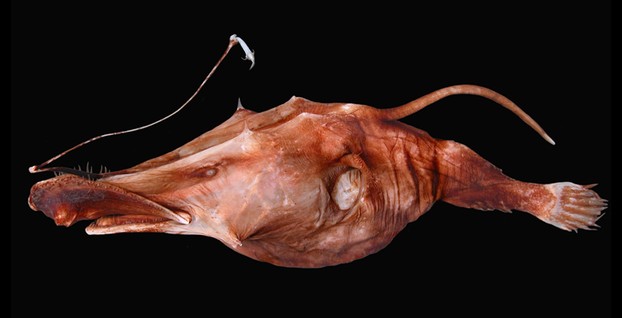
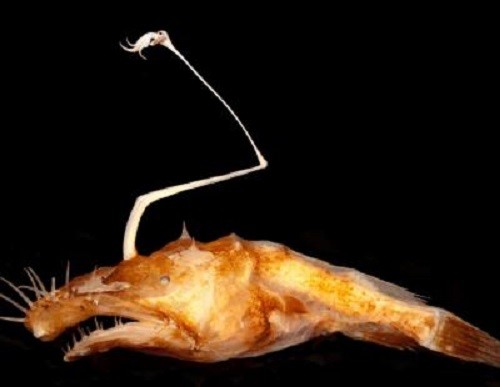
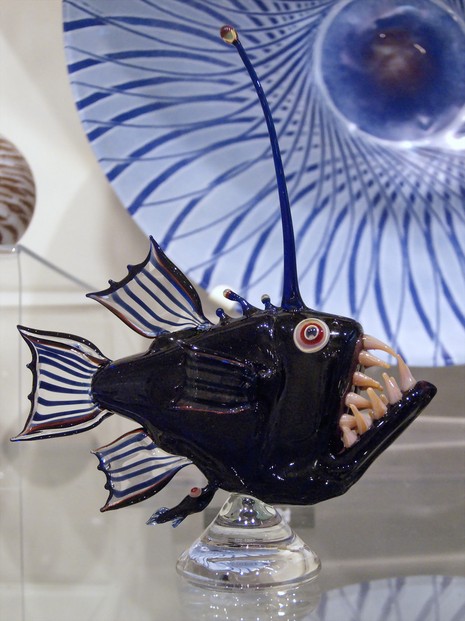




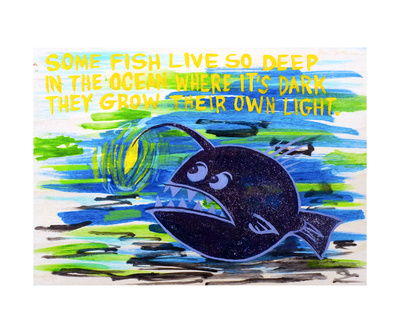


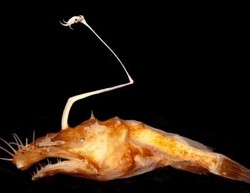

 Mailing Addresses for 2023 Form 4868 Extending 1040 and 1040SR April 15, 2024, Due Date18 days ago
Mailing Addresses for 2023 Form 4868 Extending 1040 and 1040SR April 15, 2024, Due Date18 days ago
 Mailing Addresses for 2023 Forms 1040 and 1040SR Filed in 202418 days ago
Mailing Addresses for 2023 Forms 1040 and 1040SR Filed in 202418 days ago
 Mailing Addresses for 2022 Form 4868 Extending 1040 and 1040SR April 18, 2023, Due Dateon 04/13/2023
Mailing Addresses for 2022 Form 4868 Extending 1040 and 1040SR April 18, 2023, Due Dateon 04/13/2023
 Mailing Addresses for 2022 Forms 1040 and 1040SR Filed in 2023on 04/13/2023
Mailing Addresses for 2022 Forms 1040 and 1040SR Filed in 2023on 04/13/2023

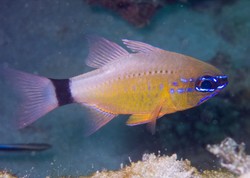
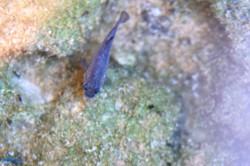
Comments
CruiseReady, If you ever do encounter this fish while you're snorkeling, you'll know that you aren't imagining things and you'll know what it is!
It's an incredible bit of ecological and paleontological luck to be funded to study the horrors of oil spills and to find a new species.
That is one ugly fish, and unlike anything I've seen in my snorkeling adventures. Guess I'm not likely ever to do so, given that they wouldn't come near the surface. Interesting about how the discovery took place.
blackspanielgallery, Yes, they certainly are. In this case, the environment makes me imagine what a fish could look like if water flows on Mars.
Strange creatures are always interesting.